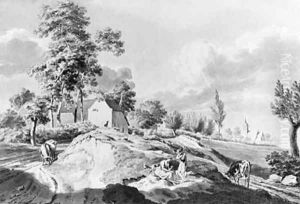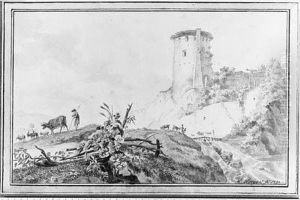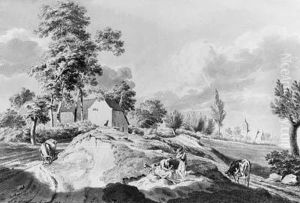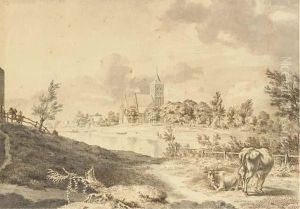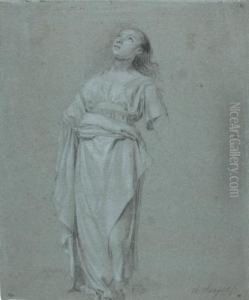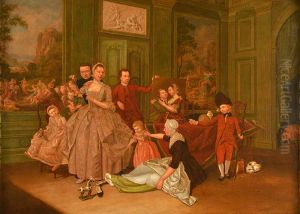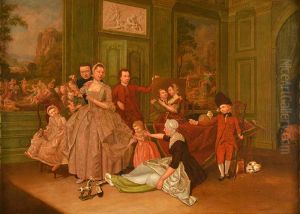Hendrik Hoogers Paintings
Hendrik Hoogers was a Dutch artist and academic born on May 27, 1747, in Nijmegen, Netherlands. He is not widely recognized today outside of specialist circles, and consequently, detailed information about his life is somewhat limited compared to more renowned artists. Hoogers is primarily known for his work as a painter, engraver, and draftsman. His style reflected the Dutch artistic traditions of the 18th century, which were deeply influenced by the legacies of the Golden Age of Dutch painting in the previous century.
Hoogers' artistic career was also complemented by his academic pursuits. He served as a professor of rhetoric at the Illustrious School in Nijmegen, reflecting the close ties between art and intellectual endeavors that characterized this era. His works often included landscapes, portraits, and historical scenes. Although Hoogers did not achieve widespread fame, his contributions to Dutch art during his time were noteworthy, particularly in the context of the city of Nijmegen, where he spent a significant portion of his life.
The historical and cultural setting of the Netherlands during Hoogers' lifetime was marked by significant changes, including the end of the Dutch Republic and the establishment of the Batavian Republic, followed by the Kingdom of Holland under Louis Bonaparte's rule, and eventually incorporation into the French Empire under Napoleon. These political shifts inevitably influenced the artistic and cultural landscape in which Hendrik Hoogers worked.
Hendrik Hoogers passed away on January 7, 1814, in Nijmegen. While his legacy may not be as prominent as that of the Dutch masters of the 17th century, Hoogers' work remains a testament to the diverse and rich tapestry of Dutch art history. His pieces can be found in various collections and museums in the Netherlands, offering insight into the regional art scene of the period in which he lived and worked.
